Welcome to our complete guide to guitar modes and modal playing. By the end of this page you'll be able to incorporate modes into your own guitar solos and songs.
Modes are widely used in lead guitar improvisation. This page shows you how to construct and play modal scales on the guitar. Scale diagrams and tab are provided, so there's no need for you to be able to read music in order to start experimenting with modes.
The first part of this lesson explains what modes are and how they're created. If you just want to play the scales, go straight to the Guitar Modes Fretboard Diagrams & Tab section.
Otherwise, read on for a complete guide to modes and modal playing.
Page Index
- What are modes?
- How modes are built from the major scale
- Modal scales 1-octave guitar fretboard diagrams
- Guitar modes patterns & TAB
- How to use modes in your playing
Elsewhere on Guitar Command...
- Learn and master modes with our Guitar Modes Backing Tracks album.
What Are Modes?

Modes are scales that are derived from other scales.
Most of the time when you hear people talking about modes they'll be referring to scales that are derived from the notes of a major scale.
These are the modes that we'll be discussing throughout this page.
There are seven modes of the major scale. Each has its own distinctive sound, and each can therefore bring a different flavor to a solo or melody.
Each of the seven modes is formed using the notes of a major scale. The notes are played in the same order as the major scale, but each mode starts on a different note.
C major scale contains the following notes: C, D, E, F, G, A, B, C.
The Dorian modal scale is derived from the major scale one tone lower than its tonic note. Therefore a D Dorian scale will use the notes of a C major scale (Because D is a tone above C).
D Dorian scale contains the following notes: D, E, F, G, A, B, C, D. Notice that these are the same notes as a C major scale, but starting and ending a step higher.
Modes are much easier to understand visually. The 'Modes Of a C Major Scale' diagram, below, will help you to get your head around the concept (it's not as complicated as it sounds!).
Modes Guitar Backing Tracks
- You can practice improvising with modes using specially-produced backing tracks from Guitar Command. Listen to sample tracks here: Modes Backing Tracks.
- Want modes and many more scales at your fingertips? Download our printable Guitar Scales Chart PDF eBook here.
How Modal Scales Are Built From The Major Scale
Remember: although any scale can have modes, the terms 'modes' and 'modal scales' usually refer to the modes of the major scale.
The diagram below shows the modes of a C major scale. Below the scale you'll see how modal scales are created using the same notes, but with different start (and end) points.
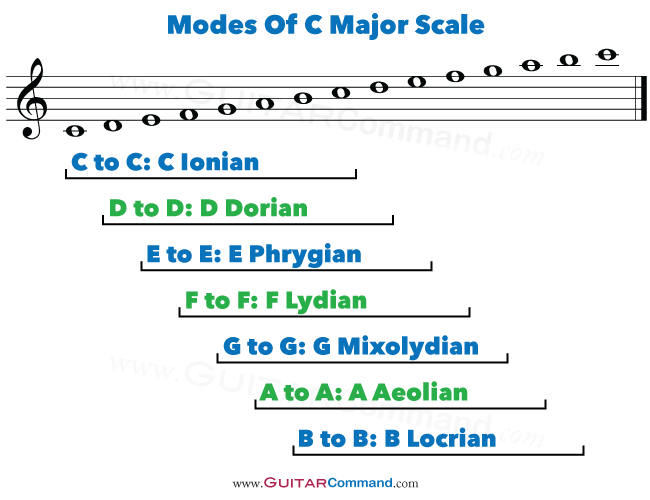
- Notice that the D Dorian modal scale shown above uses notes from the C major scale (but starting and ending on the 2nd note).
- Therefore, the C Dorian modal scale would use the notes from a B flat major scale but starting and ending on C (because C is the second note in the B flat major scale).
- E Dorian modal scale uses the notes from a D major scale but starting and ending on E (because E is the second note in a D major scale).
- F Aeolian mode uses the notes of an Ab major scale but starting and ending on F (because F is the 6th note in an Ab major scale).
Guitar Modes 1 Octave Diagrams
The fretboard diagram below shows you one way of playing a 2 octave major scale. The green circles show the root notes of the scale.
Under the main diagram are the seven modes of the major scale. As you can see, they're built using the same notes as those in the major scale.

Using the notes from the major scale diagram shown above, you can construct modal scales:
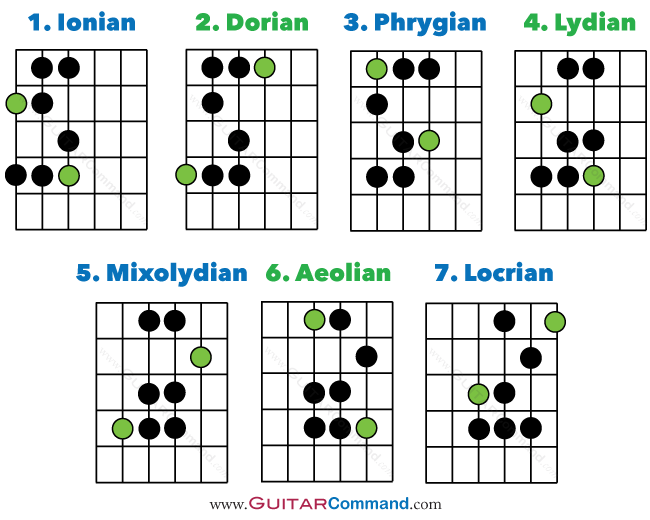
Guitar Modes Fretboard Diagrams & Tab
Playing Modes On Guitar
We guitarists have it easy; in order to play any mode, we can simply learn modal scale shapes and move them up and down the fretboard in order to play the desired modal scale with any tonic note.
Below you'll find diagrams of the shapes used to play all of the modes.
Below are all of the modes of a major scale. They are shown in diagram form and as tab with a root note of C.
When you are playing the different modes, try to distinguish the individual sound of each scale. Each mode should be thought of not as a part of a major scale, but as a new scale in its own right – with its own sound and uses in improvisation.
Ionian Mode
The Ionian modal scale is the same as a standard major scale.
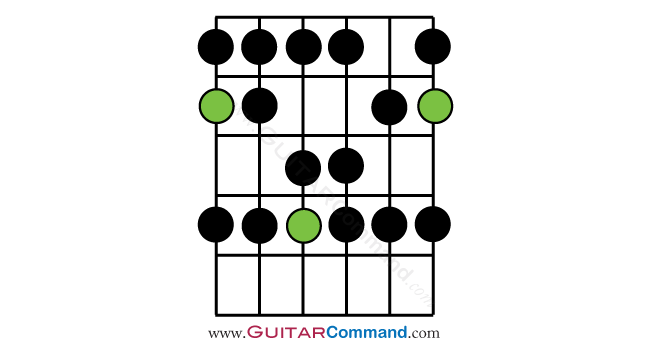
In order to play a C Ionian scale, play the pattern shown above with the green notes positioned over C notes on the fretboard (i.e. so the green note on the 6th (low E) string is played at the 8th fret). This is shown as tab below.

Dorian Mode
The Dorian mode has a minor sound. It is often used in folk melodies. In jazz it's used to improvise over the '2' chords in 2 5 1 progressions.
You can find out more about the Dorian scale here: Dorian Scale Guitar.
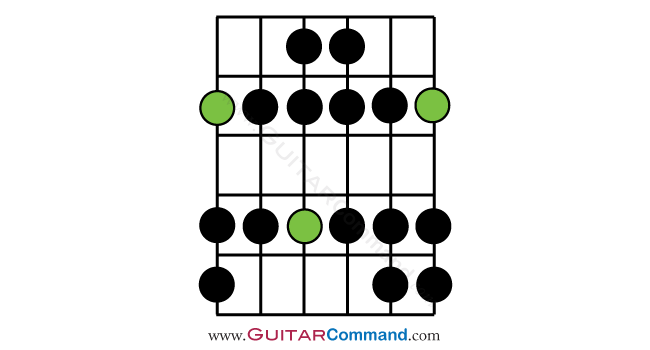

Phrygian Mode
The Phrygian modal scale has a minor tonality and a 'Spanish' sound. It is often used by metal guitarists (see our Metal Guitar Scales page), and also in Spanish music.
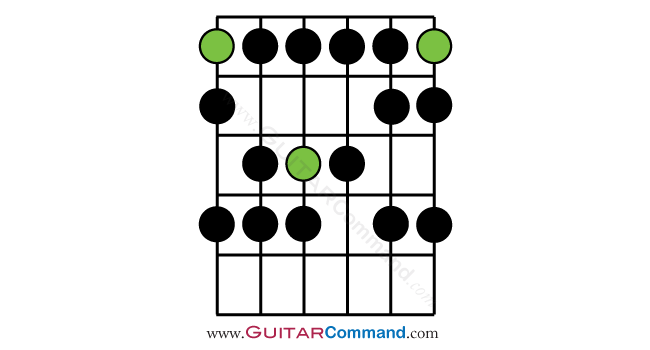

Lydian Mode
The Lydian modal scale is the same as a major scale, but with a sharpened 4th note, giving it a slightly 'mysterious' sound. It can be used by jazz guitarists to solo over major chords.
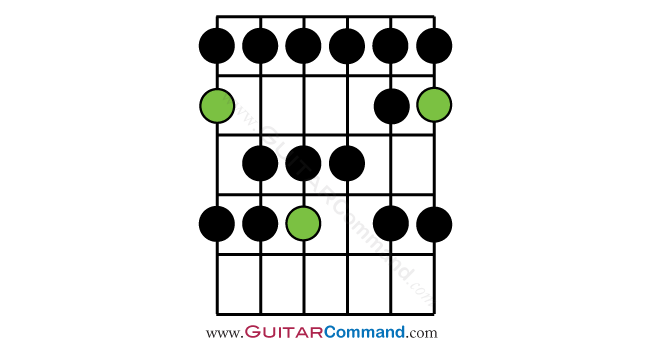
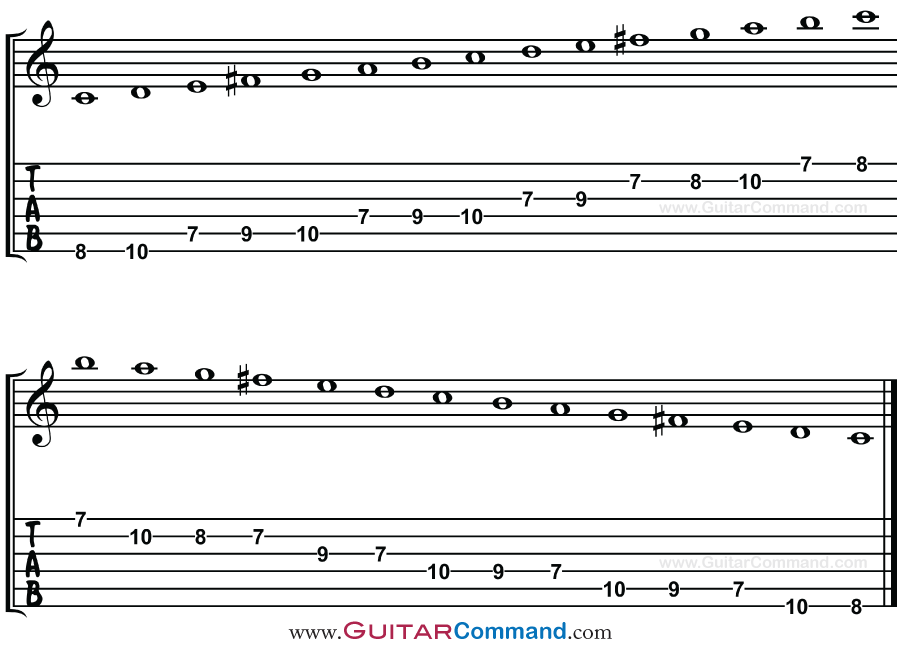
Mixolydian Mode
The mixolydian modal scale can be used to solo over dominant fifth chords. It is another mode that is often used in folk melodies.
Read more about the Mixolydian mode here: Mixolydian Mode Guitar.
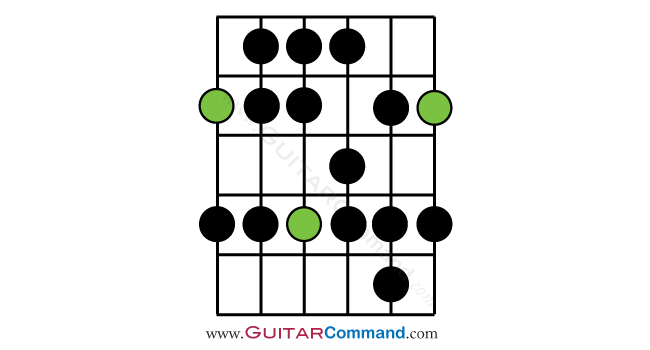

Aeolian Mode
The Aeolian modal scale is often used to improvise over minor chord sequences. It is also known as the 'natural minor' scale.
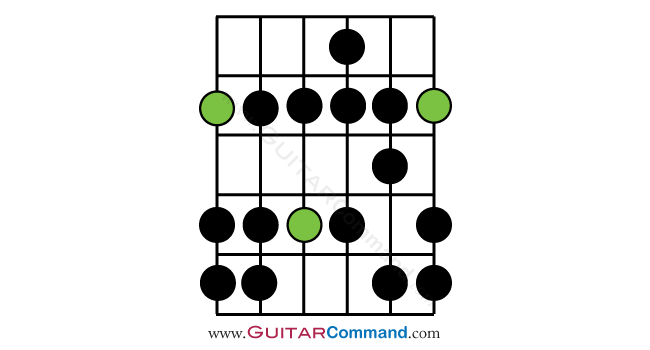

Locrian Mode
The Locrian mode, when played without accompaniment, sounds rather ambiguous. It is often used to solo over minor 7th flat 5 chords in minor 2 5 1 progressions.



How To Learn & Use Guitar Modes
Play each of the scales shown above a few times, and learn how they sound. You should eventually get to know each modal scale as a scale in its own right, rather than just as a major scale with a different starting note.
Modes In Traditional Music
Try inventing some melodies using the Dorian and Mixolydian modal scales. You may notice that these scales have a 'folky' sound. Many folk melodies are in the Dorian mode (What Shall We Do With The Drunken Sailor, Scarborough Fair, etc.) and the Mixolydian mode is widely used in Celtic music.
Modes In Jazz And Other Modern Music Styles
Modes are widely used in modern music, particularly in improvisation. The term 'Modal Jazz' is used to describe a whole genre of modal-based music. One famous example of modal jazz is Miles Davis' 'Kind Of Blue' album. Modes are also used in fusion and rock music.
Using Guitar Modes
Dorian scales can be used to improvise over ii7 chords (e.g. Dm7 in a C major song).
Mixolydian scales can be used to solo over Dominant chords (e.g. B9 in a song in E Major)
Locrian scales can be used to improvise over ii flat5 chords (e.g. Bmb5 in a song in C minor).
Conclusion
There are many ways of utilizing modes in your guitar playing. We hope that after reading this article you understand what guitar modes are, and are excited to try them out in your own music.
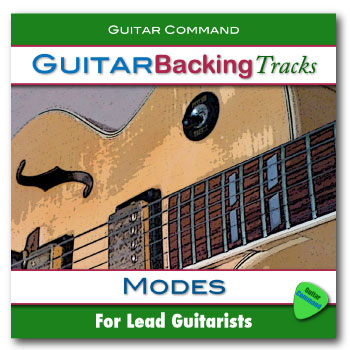
• Improve your modal playing! We've produced a special album to help guitarists improvise with modes. Hear sample tracks here: Modes Backing Tracks.
• Learn more scales at our main Guitar Scales Page.
• Our downloadable Guitar Scales Chart Book features shapes for playing guitar modes in all positions on the fingerboard.


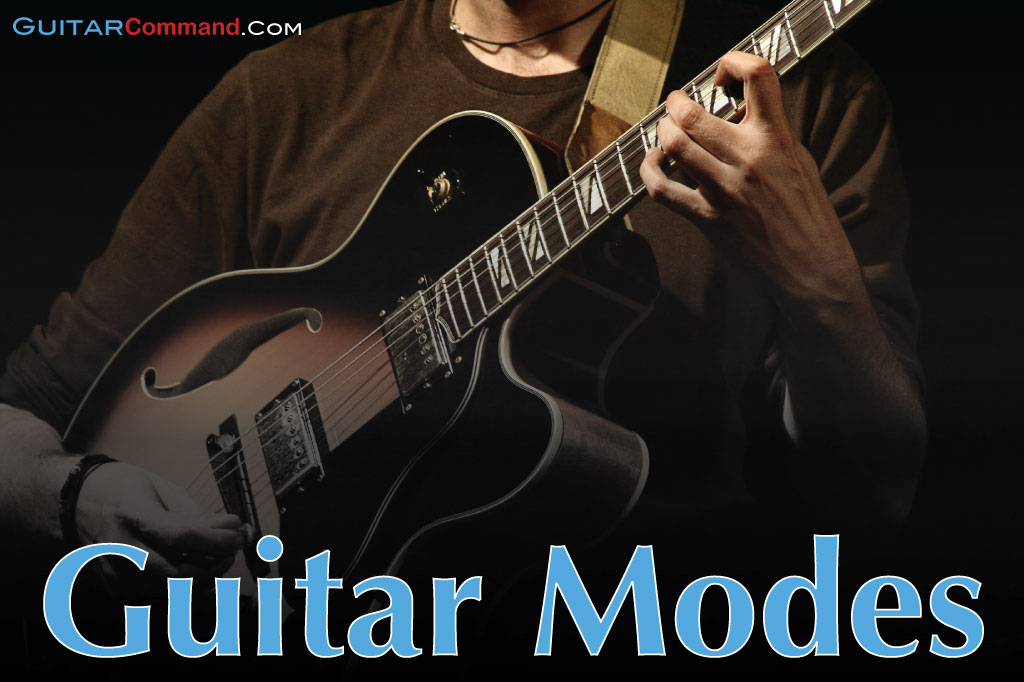

I feel like I’m almost there. Let’s say I want to play D Dorian, which is based on the Cmaj scale. Why does the Dorian scale diagram have an Eb? If it’s the same notes as a C scale, just starting on a different ‘root’, wouldn’t it just be a E natural?
I’m at step 1. What do the black and green dots on the string diagram mean? Is it to signify the placement of the fingers to make a chord? How should it be labeled or shown in a legend. And, I don’t read music. I’ve been playing by sound.
Hi Rusty,
Great questions. Modes are scales, not chords. A scale is a sequence of single notes. A chord is two or more notes played at the same time.
You’re right, the dots on the fretboard diagram signify where the fingers should be placed, one at a time, in order to play a scale.
The green notes show the root notes of the scale.
A scale shape diagram can be used to play that scale with any root note, i.e. an Ionian scale diagram can be used to play a C Ionian scale, D Ionian scale, E Ionian scale, etc.
If, for example, you wanted to play a C Ionian scale, then you’d position your hand so that the green notes on the Ionian diagram matched up with C notes on the guitar fretboard.
There are multiple ways of playing the same scales on guitar. That’s why there are multiple diagrams for each scale.
If I were you I’d start by playing major scales, and minor pentatonic scales, which you’ll find on our main guitar scales page.
I hope this helps you to get started.
Best regards,
The Guitar Command team.
The shortest but clearest information that I am looking for. Thank you so much for this amazing tutorial about scales and modes. I’ve read many tut but was very technical that makes hard to understand unlike this simple information. It was very clear to me now.
Impressive!!!!
Good information, exactly what I needed.
Thanks, gettingto grips with guitar modes, this made life easier!
Thanks from England. This is a really good site which I have recommended to many people. Cheers!
Good description of guitar modes, something I’m asked a lot about. Enjoyed the individual modes lessons too.
John, Guitar Lessons in Vancouver
Good lesson, thanks.